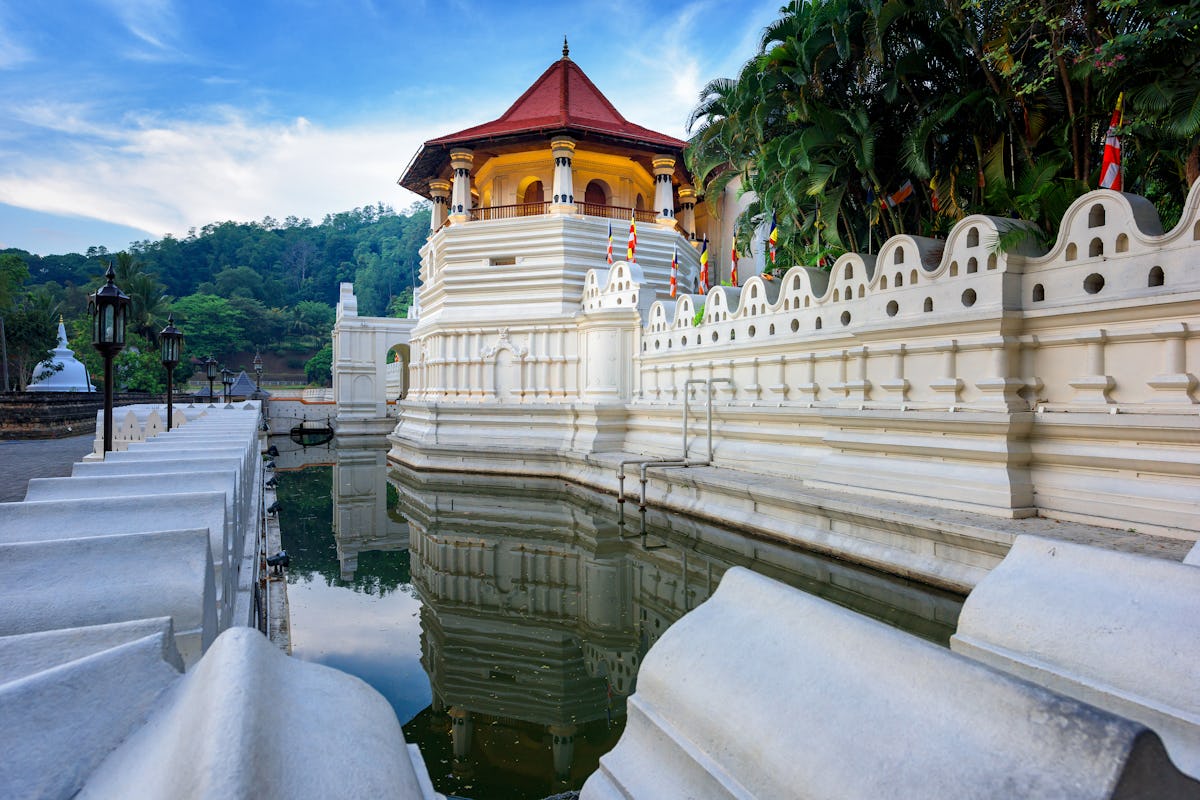
KANDY
This exotic destination offers its visitors a blend of rich culture, historical grandeur and a picturesque setting. Being one of the most sought after, and easily reachable, destinations in Sri Lanka, Kandy is one of the biggest tourist attractions in the Island.
During the 15th century Kandy was established as the royal capital of the Island which lasted till the 19th century when 2500 years of royal rule of the Island ended. And during the city`s glamorous days as the royal kingdom it was transformed into an exquisite town of palaces, temples, shrines, lakes and gardens. Today amidst the bustling market town lies this spectacular city, offering travelers to the city a range of attractions to explore. One of the biggest attractions in Kandy is the Temple of Tooth and its adjoining structures. Set against the picturesque Kandy Lake, the Temple of Tooth is where the tooth relic of Lord Buddha is kept. Every year during the months of July and August the city transforms itself into its past glory as a spectacular parade of elephants, chieftains, drummers and dancers take to the streets of Kandy. Known as the Kandy Perehera, this extravagant pageant parades the Tooth Relic in a golden casket. Explorations in Kandy include 16th century Temple of the Tooth and the Old Royal Palace compound, the temples of the Asgiriya and Malwatta Chapters and Hindu Shrines dedicated to Gods Vishnu and Natha and Goddess Patthini. Outside of the city you can explore the 14th century Gadaladeniya Temple, the 14th century Embekke Temples, the Lankathilaka Temple and the Royal Botanical Gardens. Kandy also serves as an ideal transit point for those keen on exploring the rest of the Cultural Triangle and the Hill Country areas. You can easily get a train or a bus from Colombo to get to Kandy, with an approximate travel time of three hours, and Kandy being a central point offers bus or train services to all the main cities around it.
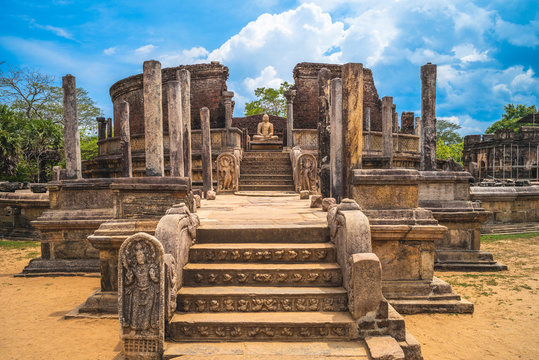
POLONNARUWA
Polonnaruwa, the medieval capital of Sri Lanka, was established during the 11th century AD. During the splendid era where the country was ruled from Polonnaruwa it dazzled as one of the most culturally and technologically advanced cities in the world during that period.
Today the main attraction in Polonnaruwa is its remains which portray the old grandeur of the city. The ruins of the ancient capital are located on the eastern shores of an artificial lake which dominates the city`s landscape. Locally known as the Parakrama Samudraya this vast lake resembles an ocean. The main city stands in ruins within a rectangular complex and other interesting buildings from the Polonnaruwa era can be found outside this city complex. Visitors exploring the ruins may look out for the 3.5 metre high statue carved in rock of a man holding ola leaf manuscripts, the royal citadel which is protected by impressively wide ramparts, the remains of the Palace of the famous King Parakramabahu, ancient irrigation systems and intricately carved pillars and moonstones.Other relics include the Potgul Vehera which had been an auditorium as well as a library for sacred books, the two Siva Devale which are Hindu temples dedicated to God Siva, the vaulted shrine known as Thuparama, the elegant and well ornate relic house of Vatagade, The Nissanka Lata Mandapaya which depicts the splendor of classical arts and architecture, the seven storied edifice of Satmahal Prasada, the Sacred Tooth relics temples of Hatadage and Atadage, the towering Lankatileke which is one of the most impressive Buddhist shrines from the 12the century and the magnificent Gal Vihare which boasts impressive Buddha statues carved in rock.
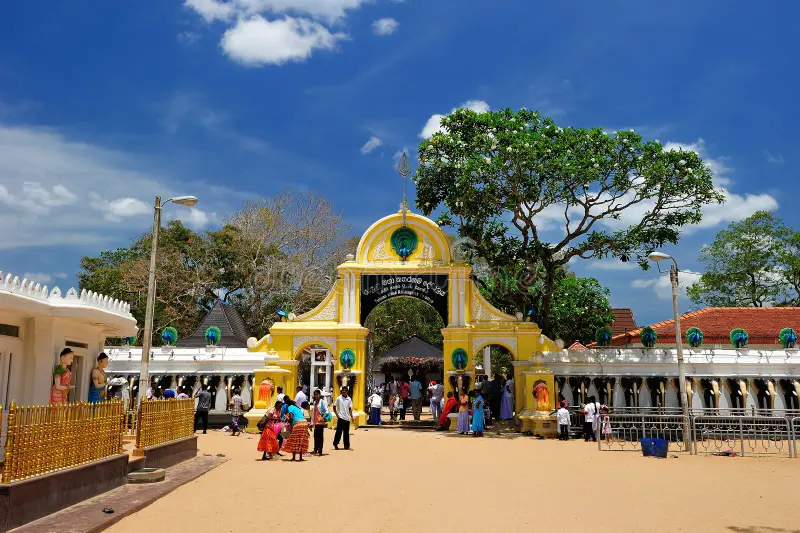
KATHARAGAMA
Kataragama is a popular pilgrimage town among the local Buddhists, Hindus, Muslims and the aboriginal communities. Located in the southeastern region of Sri Lanka its main attraction is the Ruhunu Maha Kataragam Devalaya, a shrine dedicated to the Skanda-Murukan aka Kataragama Deviyo.
During medieval times Kataragama had been a small town but the shrine, which dates as far back as the 2nd century BC, has throughout the times attracted devotees. An annual colorful procession is the main event of this shrine. Held during the months of July and August, the pageants highlights are the `Kawadi` dancers and the fire walkers. The town is also famous for the impressive and stunning Buddhist Stupa, `Kirir Vehera` which dates back to late BC centuries, and as a significant city during the Ruhuna Kingdom. Today Kataragama is a much-developed holiday destination featuring a range of accommodation options. It is also a popular stop over for those visiting the adjoining Yala National Park
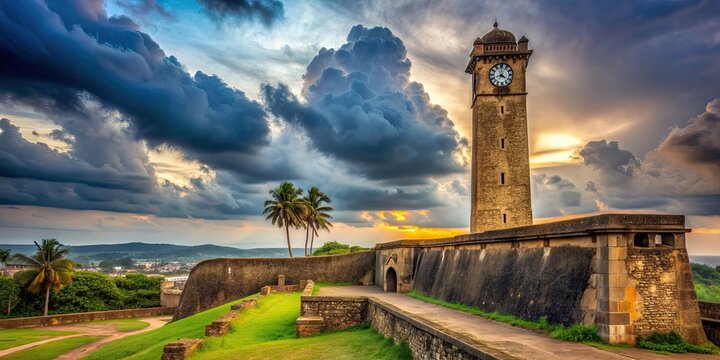
GALLE
The beautiful bay of Galle, off the southwestern coast of the Island, had been a popular port of call and the main port of Sri Lanka, then Ceylon, for centuries. The rocky shelter provided ideal conditions for the Portuguese and subsequently the Dutch navigators who arrived at the Island.
The peninsular was further fortified by both the Portuguese and the Dutch resulting in the Galle Fort which boasts a unique blend of European architectural styles and Sri Lankan cultural and geological heritages. The Galle Fort along with the old Fort Town is now a much sought after attraction in the Southern Capital of Sri Lanka. The narrow streets lined with Dutch style houses, little coffee shops, jewelry shops, range of lodging options and most importantly the old Dutch ambiance, provide an interesting exploration. This coastal town is about 120 km from the Capital Colombo and the journey itself is through a picturesque coastal road or rail. Though the main attraction here is the Fort, you can also explore the lovely Unawatuna beach Bay. Surrounded by a coral reef, the ocean waters here are ideal for swimming and snorkeling.

SIGIRIYA
Sigiriya, also known as the Lion`s Rock, is an ancient rock fortress from the 5th century BC. Located in the Matale District in the central regions of Sri Lanka, this palace has been declared by UNESCO as the 8th Wonder of the World.
Though the exact history of this fortress in unknown it is believed that it has been inhabited even during the prehistoric times. According to the local chronicles of Mahavamsa, the fortress, including the surrounding gardens, structures and reservoirs, was constructed by King Kashyapa during the 5th century. But there is evidence to believe that it had been a monastery since 5th century BC and was taken over by King Kashyapa during his reign and thereafter continued to serve as a monastery until the 14th century. The biggest attractions here is the dramatic rock fortress, which can be explored by climbing a precarious winding staircase, which includes the amazingly beautiful world renowned frescoes, the mid-level terrace where the Lion Gate is, the mirror wall inscribed with interesting poetry dating from the 8th century and the upper level where there still exists remains portraying the splendor of the ancient Palace. The lower Palace and the Gardens cover a vast extent of land. Moats, gardens, walls portray the originality and creativity of the designers and builder of the Fortress. Considering the whole plan of the site, Sigiriya is regarded as one of the most elaborate, original and best urban plants of the first millennium.
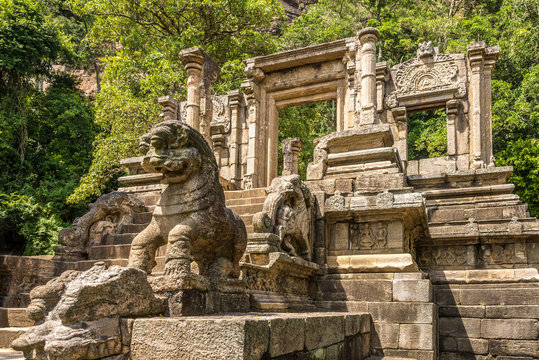
YAPAHUWA
Most often Yapahuwa goes unnoticed when compared to the other historic capitals in the cultural triangle, Anuradhapura and Polonnaruwa. However, it is a place that showcases Sri Lanka`s rich cultural heritage to perfection.
Situated between Kurunegala and Anuradhapura, Yapahuwa like Sigiriya was built on a rock boulder but at a much lower elevation and served as the capital of Sri Lanka for a relatively short time when compared to the other ancient capitals. It served as both a palace and a fortress though there is evidence that suggests that it was also used as a Buddhist monastery. Though much is not known about Yapahuwa, excavations show that the area had close diplomatic dealings with China. Walk around the ruins and take in the sheer brilliance of ancient architecture as the carvings and stonework such as an ornamental stairway stun you with their intricate designs. Learn more details and see more artifacts at the museum that is situated at the entrance. There are many hotels in Yapahuwa that ensure you enjoy a comfortable stay in this ancient capital city

DAMBULLA
Located in the Matale District in the Central Province, Dambulla`s main attraction is its historical and cultural heritage. Its complex of caves and the historic temple built in the caves shows a history and inhabitants that goes far back as the 7th to the 3rd century BC.
Cave paintings and statues portray the evolution of Sri Lankan art as well as the influence Buddhism had in the local culture.The area of the Temple boasts over 80 caves and most of them for centuries have been used as locations for meditation by the monks. The main Temple is in about 5 caves which is also the area of murals and intricately designed monuments. Other attractions in the area includes the 500-million-year-old Rose Quartz Mountain and one of the oldest forests in Sri Lanka the Iron Wood Forest.
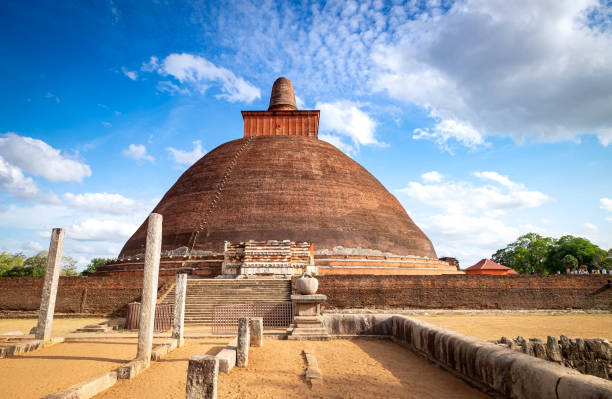
ANURADHAPURA
The sacred city of Anuradhapura was a thriving kingdom for 1300 years and the capital of Sri Lanka during the 3rd century BC. Boasting civilization, a rich culture and an impressive irrigation system Anuradhapura is considered one of the greatest civilizations of the ancient world.
Today Anuradhapura is in picturesque ruins with the newer commercialized little town located close by. Visitors to the old Anuradhapura City can explore the fascinating ruins which include the ancient cities, magnificent massive stupas, temples, intricate carvings, palaces and the remains of the ancient irrigation system. Most of the Stupas are still worshipped by Buddhists all over the world and there are easy access roads to visit all the great monuments. The area of the great stupas is complemented by a massive amazingly beautiful tank
